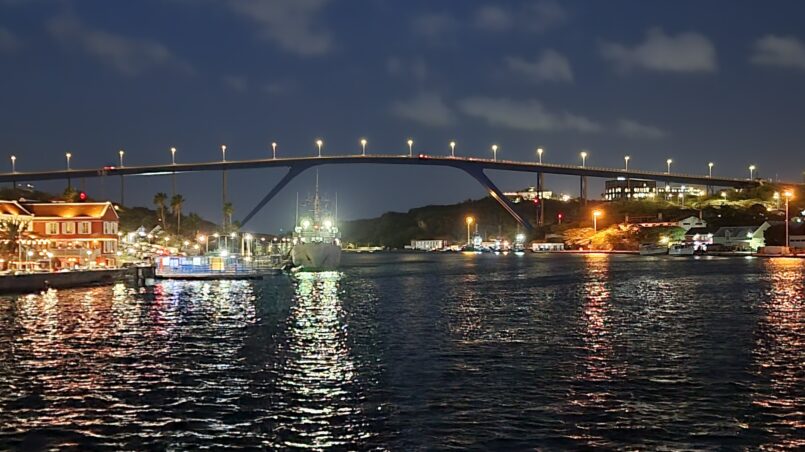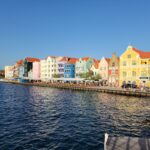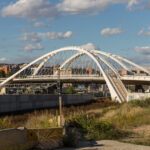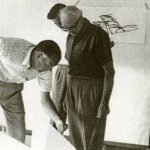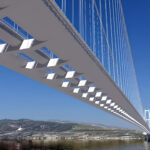From 1888, citizens of Willemstad had a new, more reliable way to cross Sint Anna Bay – that Swinging Old Lady, the Queen Emma floating bridge. We can imagine that travel times to cross the bay went down. Gone were the days of having to wait for a yola to cross the bay. You really could cross whenever you wanted, provided the bridge was not open for a vessel. For the majority of people, excepting the yola captains themselves, the bridge brought an increase in quality of life.
But something changed around the turn of the 20th century. The automobile came to Curaçao. Virtually overnight, multiple modes were sharing this movable link between Punda and Otrobanda. And as time went on, the amount of people, goods and vehicles needing to cross the bay began to increase.
By the 1930s, leaders in Curaçao conceded that something needed to be done. The oil refining business was booming on the Schottegat. This meant more crude oil was coming into Willemstad and more refined oil was leaving. This, in turn, meant that Queen Emma was opening more frequently. Traffic jams on Handelskade on the Punda side would frequently last upwards of 45 minutes after just a single bridge opening. Less than half a century after it brought increased prosperity to Willemstad, the moving bridge was now becoming a nuisance.
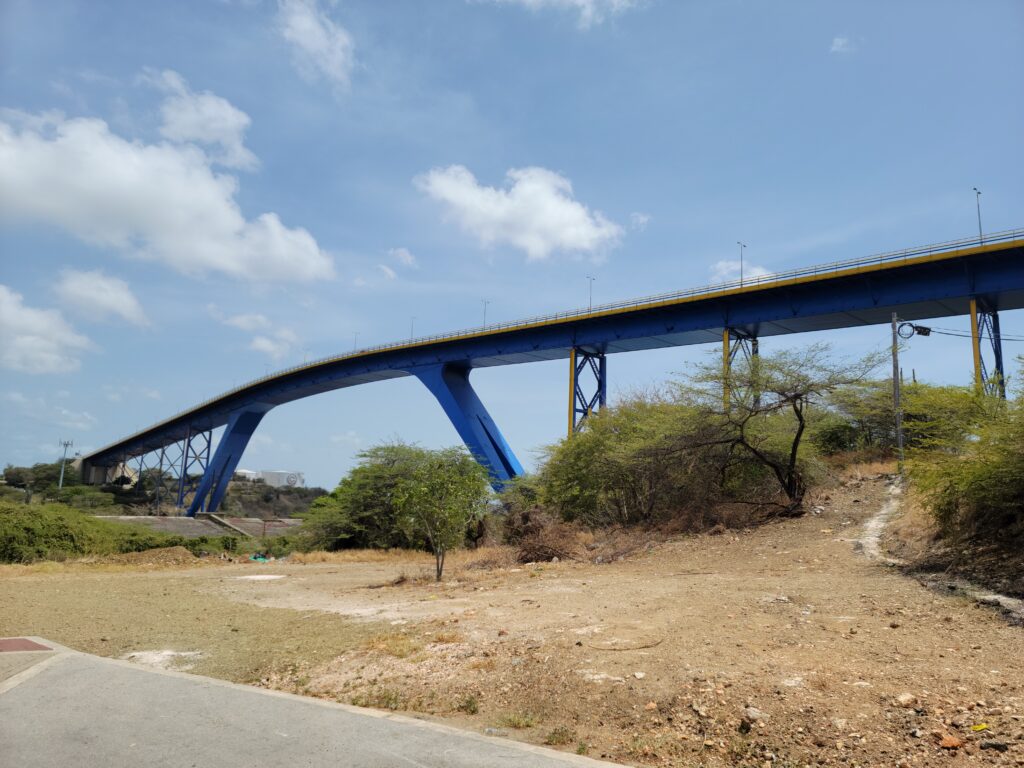
Various plans were discussed for a more permanent solution to the problem between 1946 and 1961. These included high level bridges and even a tunnel under the bay. In 1961, plans for a bridge were approved. The bridge would be located approximately halfway between the Queen Emma Bridge and Fort Nassau, running between two cliffs on either side of Sint Anna Bay.
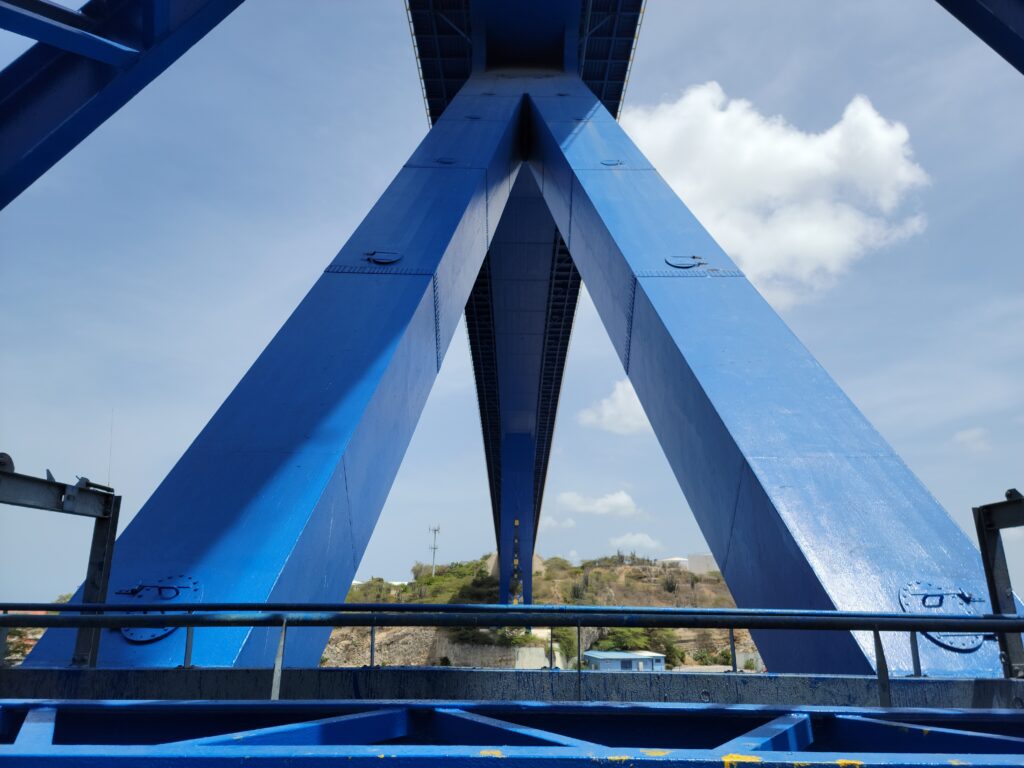
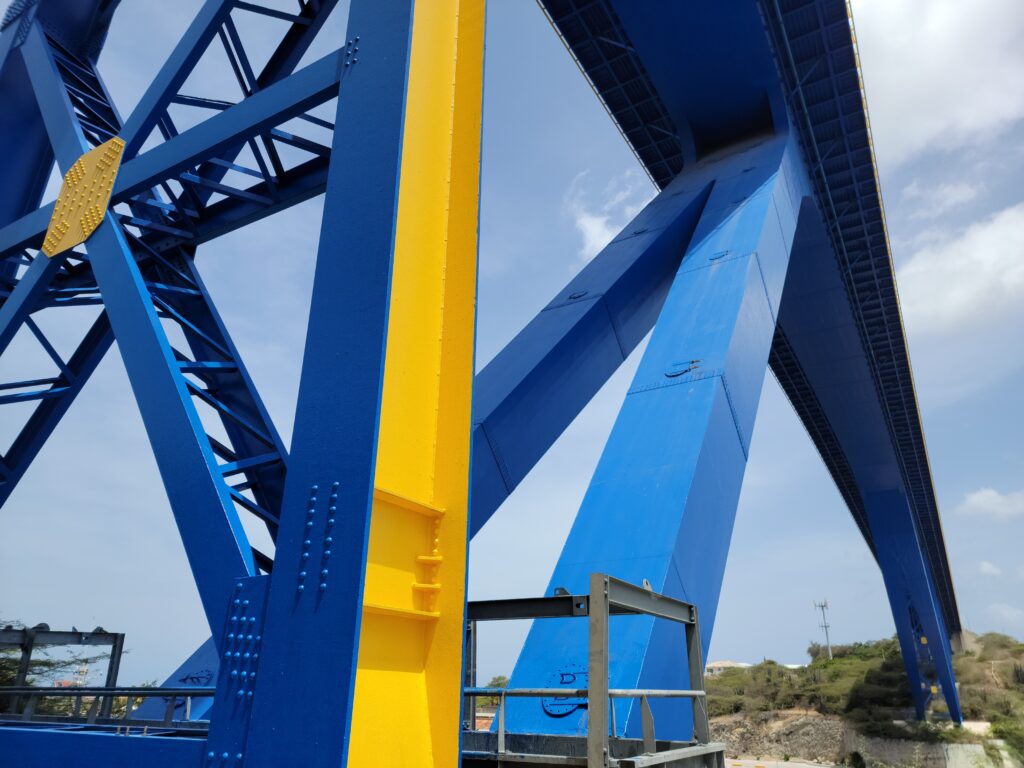
Concrete is not readily available in the Caribbean. Aggregate, sand and cement need to be imported in order to make it, driving the cost up. Cast-in-place concrete is used sparingly, even today, and most construction uses concrete masonry units (CMU) instead, which can be fabricated off island and imported for far cheaper.
This is likely the reason that steel was chosen for the new bridge. Reinforced concrete was only used in the abutment and thrust blocks. Everything else was to be made from steel. But what about corrosion from being so close to saltwater? Chloride mixed with water and oxygen will oxidize (corrode) steel, even steel embedded in concrete. Concrete will protect the rebar for a while, but eventually the chlorides will penetrate the porous concrete and attack the rebar. Once this happens, little can be done about it. With structural steel, such as would be used in the new bridge, you can always keep the steel protected with paint.
The new bridge design would amount to a steel segmental box girder, erected using the cantilever method. Concrete abutment work began in 1962. The individual steel superstructure sections began fabrication in 1964 in the Netherlands and were shipped to Curaçao for assembly.
There were to be 50 steel sections, 25 on the Punda half and 25 on the Otrobanda half. Erection began in 1966 on the Punda side, with new sections lifted into place and riveted together at field splices. The two halves would have met at the center where they would have been closed together, allowing redistribution of bending stresses into its final configuration. All was going well until late in 1967.
On November 6, 1967, as section 23 on the Punda side was being erected, the entire steel work collapsed dramatically. Nearly 1600 tons of steel was sent falling 185 feet into the gorge over Sint Anna Bay, killing 15 construction workers.

The cause of the collapse was never fully explained. Some have blamed steel fatigue. Other steel bridges have had fatigue problems as a result of how they were constructed. When we think of fatigue, we generally think of live load induced fatigue. But fatigue can occur due to other forces, and in some cases excitation from wind can cause fatigue cracks to form. If the bridge was left with large cantilevers standing in high winds, such as are experienced through the Sint Anna Bay channel, this could have weakened the steel as it was erected.
Another more likely cause was deliberate under sizing of the steel plates used in order to cut costs. Corruption was blamed, as funds from the Netherlands to build the bridge may have been skimmed off, leaving less money for bridge construction. If steel shop drawings were altered to thinner plates than needed, that would explain the collapse.
Whatever the true cause, bridge construction restarted soon after. No changes were made to the design of the bridge. Steel erection restarted on the Otrobanda side, progressing without incident until all 25 sections were built. The remains of the collapsed Punda side were removed and the Punda side was rebuilt, also without incident. Delays from the collapse meant the bridge would not officially open until April 30, 1974, the Queen’s 65th birthday.
Upon its opening, the Queen Emma Bridge was permanently closed to vehicle traffic. This shifted traffic volumes from the overcrowded renaissance streets of the Punda and Otrobanda districts to the newly completed bridge. Despite the inconvenience to vehicles, the detour from one side to the other is relatively short.
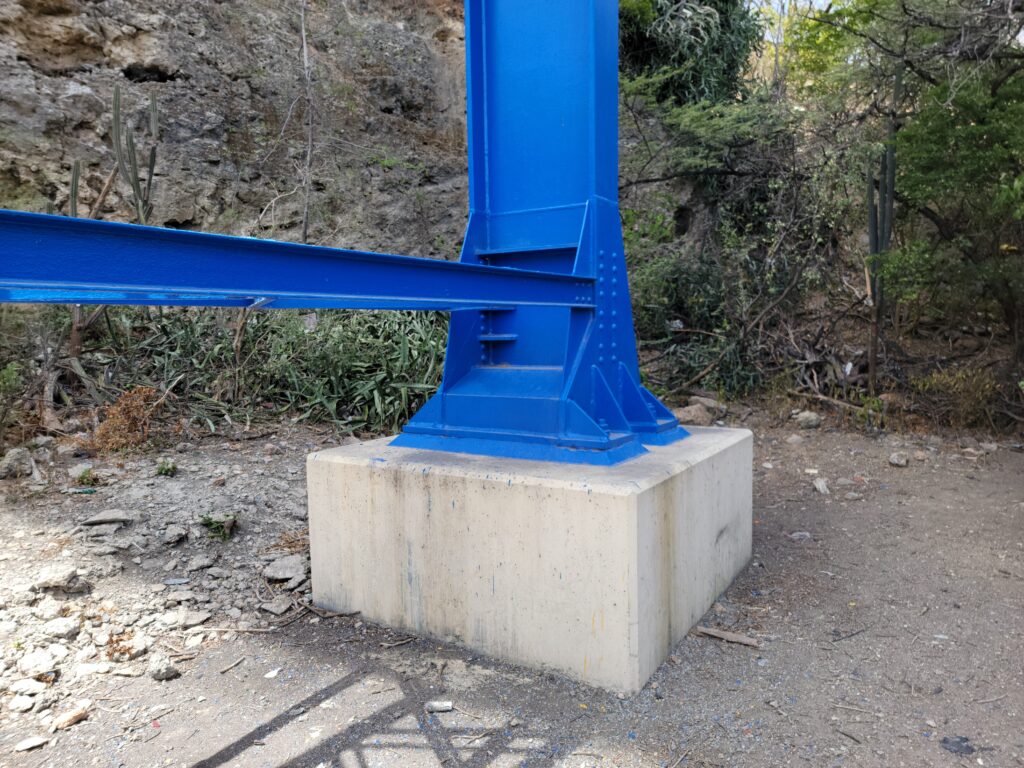
The bridge is a semi-arch design, with inclined steel legs framing into the steel box superstructure. Large thrust blocks are built into banks above the bay, which the legs are pinned to with large bearings. Jacking plates were built into the ends of the legs to help with closing the bridge after erection.
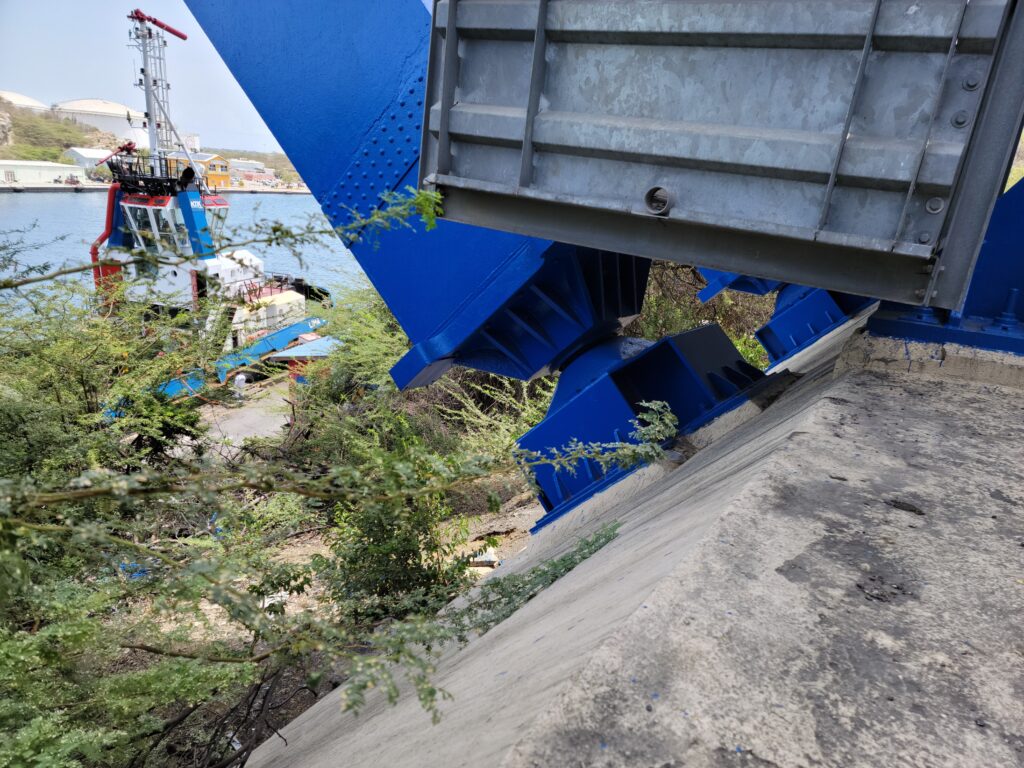
At 185 feet tall, the bridge is one of the highest points in Curaçao and it is the tallest bridge in the Caribbean. Ostensibly, pedestrians and bicyclists are prohibited from using the bridge due to the high winds in the area and structural vibrations. I find this odd since there are sidewalks on the bridge, but there are no shoulders. The bridge carries four lanes of traffic, two in each direction, and is part of the island’s ring road, which encircles the Schottegat.
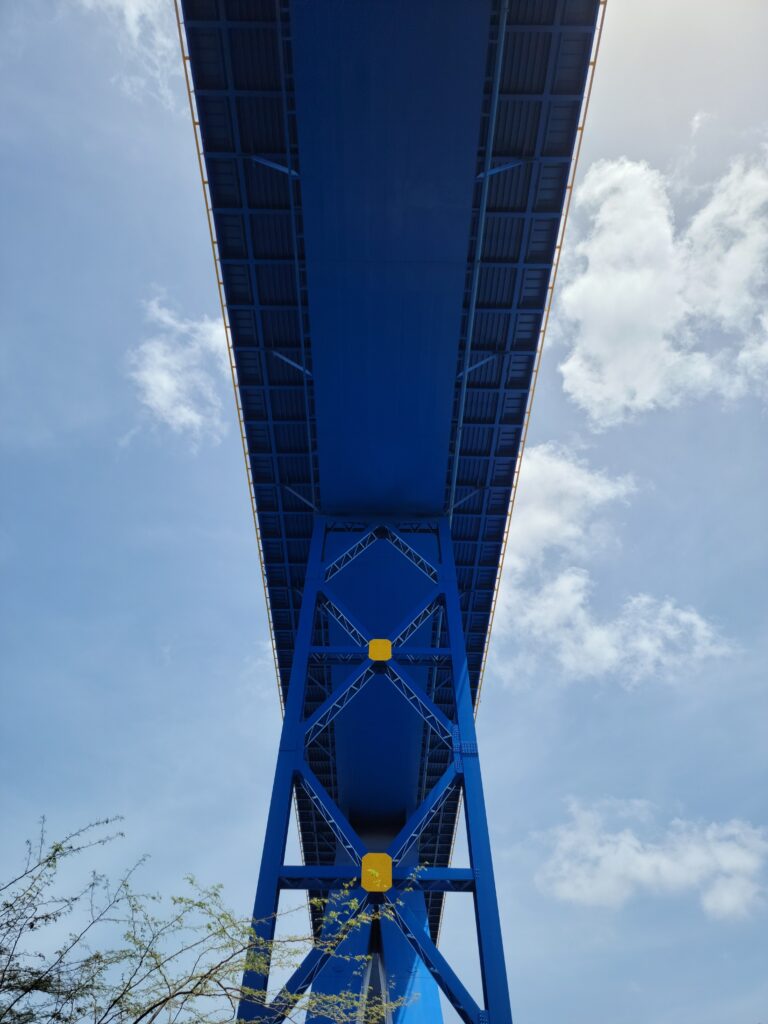
At 500 meters long, the bridge is an impressive sight from multiple vantage points. It is painted a dark blue color with some yellow contrasts, the two state colors of Curaçao. And being made of steel, the bridge needs continual maintenance work. It was painted as recently as 2022, requiring half of the roadway to be closed.
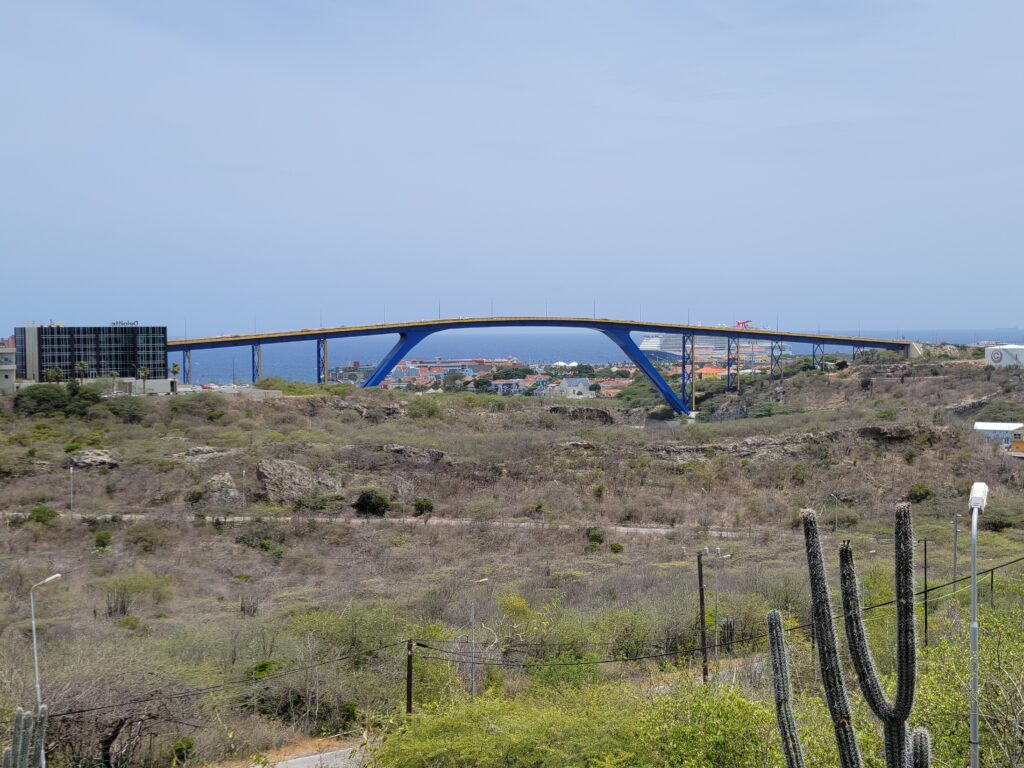
So what are you waiting for? Plan your visit to the tallest bridge in the Caribbean today!
Views: 882